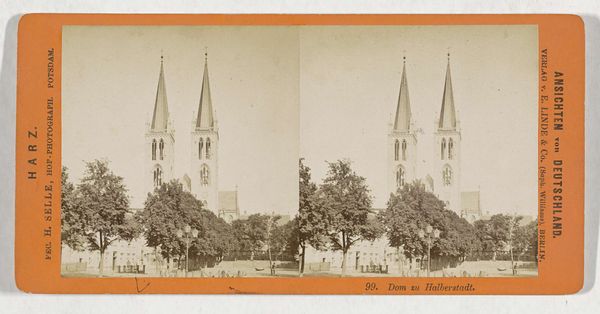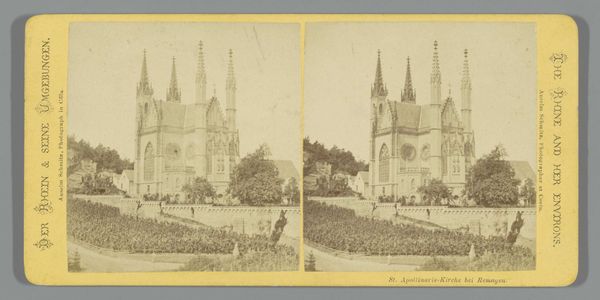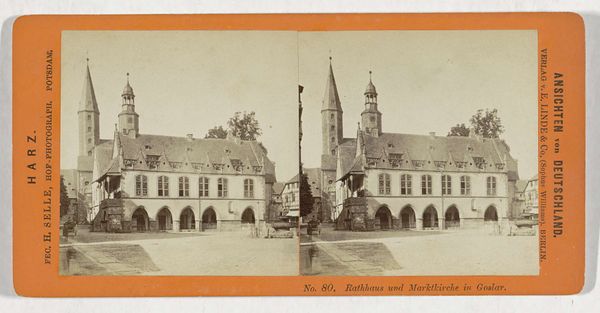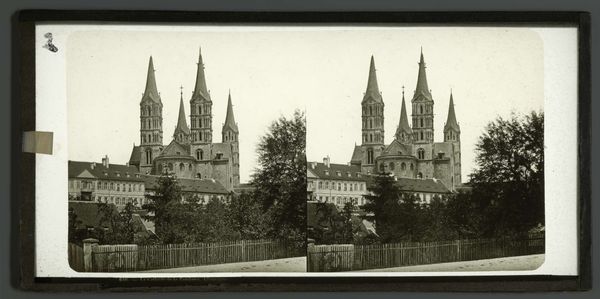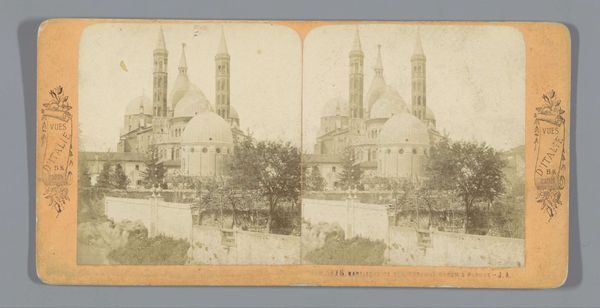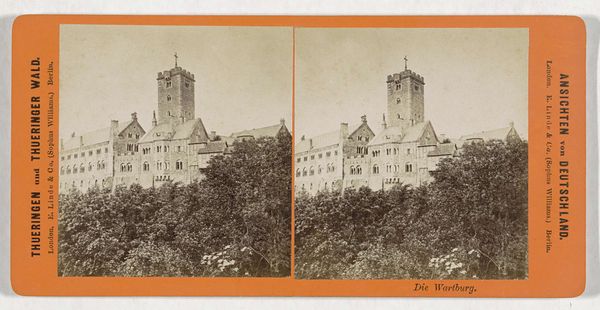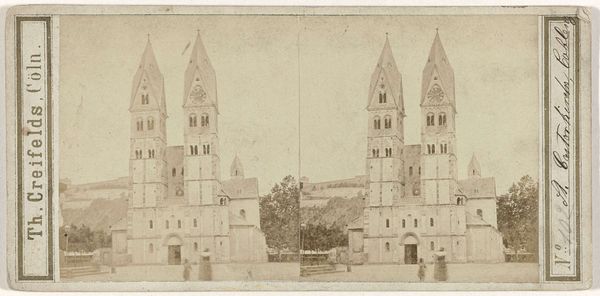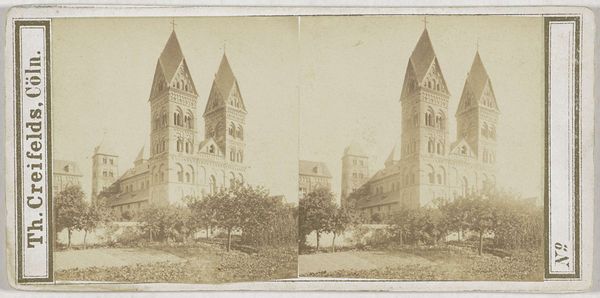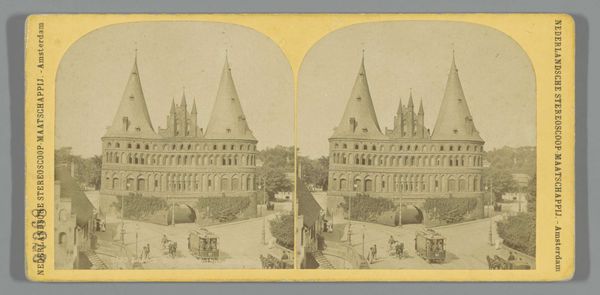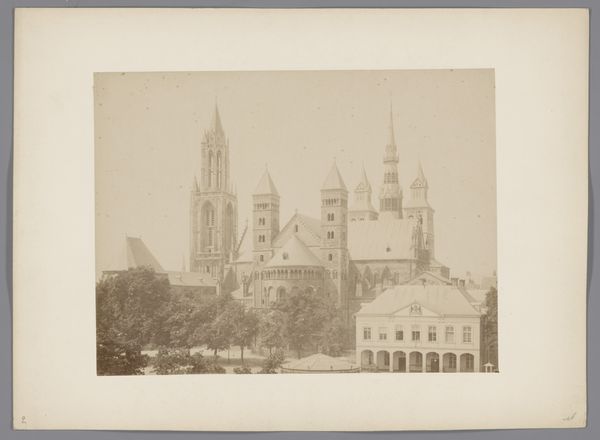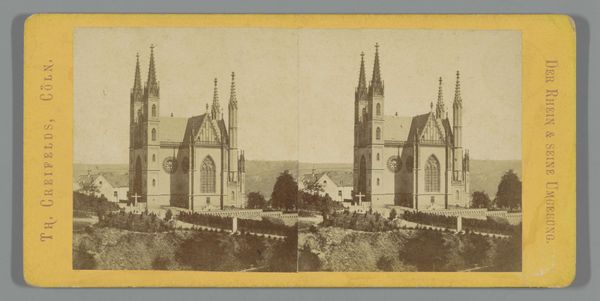
print, photography
# print
#
landscape
#
photography
#
cityscape
Dimensions: height 87 mm, width 176 mm
Copyright: Rijks Museum: Open Domain
Editor: So, here we have Hermann Selle's photograph, "Onze-Lieve-Vrouwenkerk in Halberstadt," taken sometime between 1868 and 1890. It's a striking cityscape; the church feels both imposing and serene, viewed through the screen of trees. What do you see when you look at this piece? Curator: Beyond the obvious architectural subject, I see a powerful statement about the relationship between religious institutions and secular power during the late 19th century. The framing of the church – partially obscured by the trees, yet still dominant in the landscape – speaks to a tension. Editor: Tension? Could you elaborate? Curator: Consider the historical context. This photograph was taken during the rise of German nationalism and a period of secularization. How might the photographer be positioning the church – and by extension, religion – within this shifting societal landscape? Is Selle critiquing or celebrating? The formal elements offer clues, but we must consider the social undercurrents to fully understand the message. Does the Church support nationalism? Is nationalism superseding religion as an ideology? Editor: I hadn’t thought about it that way. I was so focused on the aesthetics that I missed the potential commentary on society and politics. Curator: Exactly! This image offers us a lens to explore the complex interplay between faith, power, and national identity during a pivotal era in European history. Photography was new at the time: what possibilities did that open for commenting on identity, or politics? Editor: So much to think about! It's amazing how one image can hold so many layers of meaning when viewed through a critical and historical lens. Curator: Precisely. And that's the beauty of engaging with art – it's a constant process of questioning, contextualizing, and reinterpreting. We see history through the object.
Comments
No comments
Be the first to comment and join the conversation on the ultimate creative platform.
